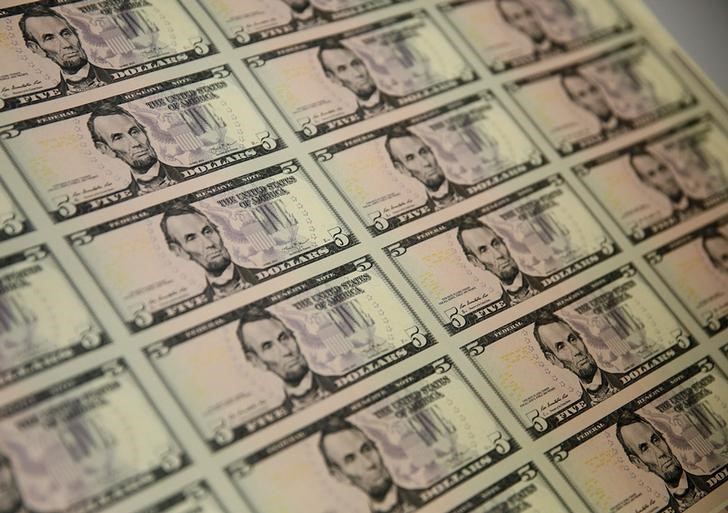TSX gains after CPI shows US inflation rose 3%
Investing.com - The U.S. dollar slipped lower Friday, but was on course for a second consecutive weekly gain after the release of solid U.S. economic data supported the view the Federal Reserve can delay interest rate cuts further.
At 04:15 ET (08:15 GMT), the Dollar Index, which tracks the greenback against a basket of six other currencies, fell 0.4% to 98.100, but was on track for a gain of 0.7% this week, building on the previous week’s gains of just under 1%.
Dollar set for weekly gain
The dollar has been in demand of late, helped by the release of data pointing to a resilient U.S. economy, which suggests that the Federal Reserve could delay interest rate cuts further than expected.
Data released on Thursday showed retail sales rebounded more than expected in June and first-time applications for unemployment benefits dropped to a three-month low last week.
Earlier in the week, a report showed consumer prices increased by the most in five months in June, suggesting tariffs were starting to have an impact on inflation.
“One of our key calls this summer is that this return to dollar ‘functionality’ reduces the likelihood of new selloffs - unless Trump fires Fed Chair Jay Powell (as Wednesday’s brief dollar collapse showed) or escalates protectionism beyond markets’ current tolerance, particularly against China,” said analysts at ING, in a note.
“We don’t expect either, and still see some dollar support in the coming months as the 14bp priced into the Fed’s September contract unwinds.”
Traders currently price about 45 basis points of U.S. rate cuts for the remainder of the year, down from closer to 50 basis points at the start of the week.
Today’s calendar includes some housing figures and the University of Michigan surveys for June.
Sterling hit by weak GDP data
In Europe, EUR/USD rose 0.3% to 1.1623, rebounding from Thursday’s three-week low of 1.1556, but on course for a weekly loss of around 0.6%.
German producer prices fell in line with expectations in June, decreasing by 1.3% on the year, the federal statistics office reported on Friday.
This followed the final release of eurozone inflation for June confirming consumer prices rose 2.0% on an annual basis, in line with the European Central Bank’s target.
With underlying inflationary pressures in the eurozone’s largest economy so limited the ECB probably has room to ease further, but U.S. President Donald Trump’s threatened 30% tariff on European Union imports is likely complicating the decision making.
The ECB signalled after its June meeting that it was likely to keep interest rates unchanged later this month.
That said, “the ECB meeting may prove less dull than expected, said ING. “A cut is highly unlikely given recent communication, but tariff risks and a strong euro could revitalise a dovish front that otherwise seemed settled on a neutral pivot.”
GBP/USD climbed 0.2% to 1.3432, but was still on course for a weekly loss of around 0.5%, with the dollar heading higher.
Recent data has seen the U.K. unemployment rate rising more than expected and economic growth contracting in May, suggesting the Bank of England will have to continue cutting interest rates.
Politics weighs on yen
Elsewhere, USD/JPY edged 0.1% higher to 148.63, but the yen is on track for a weekly loss of around 0.8% as signs grew that Japan’s coalition would fall short of retaining its majority.
That would potentially give more sway to opposition parties that back consumption tax cuts to ease the burden on voters from rising prices.
Data on Friday showed that Japan’s core inflation eased in June but remained above the Bank of Japan’s 2% target.
AUD/USD gained 0.5% to 0.6516, bouncing after falling to its lowest level in over three weeks as weak jobs data spurred RBA rate cut bets.
USD/CNY traded just 0.1% lower to 7.1782.
